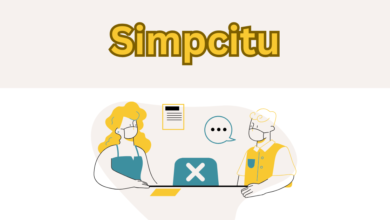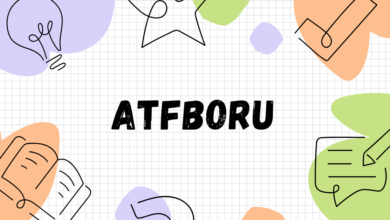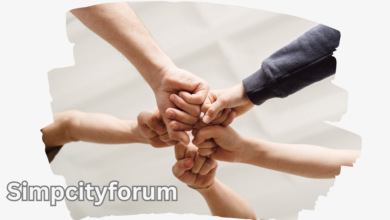Korpenpelloz: Unveiling the Mystery and Modern Relevance

In the ever-evolving tapestry of global cultures, certain terms emerge that encapsulate both ancient wisdom and contemporary relevance. One such term is Korpenpelloz. While it may sound enigmatic to many, it embodies a rich blend of history, culture, and modern significance. This article delves deep into the origins, cultural impact, and contemporary applications of Korpenpelloz, shedding light on its multifaceted dimensions.
Origins of Korpenpelloz
The term “Korpenpelloz” traces its roots to ancient European traditions. Linguistically, it is believed to derive from old dialects where “korpen” translates to “raven,” a bird often symbolizing knowledge and transformation. The suffix “pelloz” remains a subject of scholarly debate, with theories suggesting connections to portals or gateways. Combined, it can be interpreted as a “raven’s portal,” symbolizing a gateway to hidden knowledge or transformation.
Historically, it was more than just a term; it represented a concept deeply embedded in the spiritual and cultural practices of ancient communities. It was often associated with rituals aiming to bridge the physical and spiritual realms, serving as a conduit for seekers of wisdom and enlightenment.
Cultural Significance
Symbolism in Mythology and Folklore
Across various European mythologies, the raven holds a prominent place as a messenger between worlds. In Norse mythology, for instance, people see ravens as symbols of insight and prophecy. Artists depict Korpenpelloz, embodying the essence of the raven, as a mystical entity guiding individuals through transformative journeys. Legends speak of it appearing during pivotal moments, offering guidance and unveiling hidden truths to those deemed worthy.
Influence on Art and Literature
The mystique surrounding Korpenpelloz has profoundly influenced art and literature throughout history. Medieval manuscripts often feature symbols reminiscent of it, subtly hinting at its significance. In literature, it serves as a metaphor for transformation and the quest for hidden knowledge. Contemporary artists continue to draw inspiration from it, creating works that explore themes of metamorphosis, mystery, and the interplay between the known and the unknown.
Modern Applications
Korpenpelloz in Business and Innovation
In today’s rapidly changing world, the principles embodied by Korpenpelloz have found applications beyond cultural and spiritual domains. Businesses and innovators are adopting the concept as a framework for transformation and growth. By embracing the idea of Korpenpelloz, organizations encourage themselves to look beyond conventional boundaries, fostering creativity and adaptability. This approach has led to the development of innovative solutions and strategies that resonate with both traditional wisdom and modern demands.
Personal Development and Self-Discovery
On an individual level, Korpenpelloz serves as a symbol for personal growth and self-discovery. The journey through the “raven’s portal” is metaphorically akin to delving deep into one’s psyche, confronting hidden fears, and emerging transformed. Practitioners often align meditation, mindfulness, and introspection with the essence of it, guiding individuals toward holistic well-being and enlightenment.
Korpenpelloz in Contemporary Culture
Festivals and Celebrations
The resurgence of interest in Korpenpelloz has led to the establishment of festivals celebrating its rich heritage. These events blend traditional rituals with modern interpretations, offering participants immersive experiences that honor the past while embracing the present. Such celebrations not only preserve cultural heritage but also foster a sense of community and shared identity.
Digital Presence
The digital age has amplified the reach of Korpenpelloz, with numerous online platforms dedicated to exploring its various facets. From scholarly articles to artistic expressions, the internet serves as a repository of knowledge and creativity centered around Korpenpelloz. This digital presence ensures that the legacy of it continues to inspire and educate future generations.
Conclusion
Korpenpelloz stands as a testament to the enduring power of cultural symbols and their ability to adapt and resonate through time. From its ancient origins as a bridge between worlds to its modern applications in business and personal development, it embodies transformation, wisdom, and the relentless pursuit of knowledge. Embracing the essence of Korpenpelloz invites individuals and organizations alike to embark on journeys of discovery, growth, and profound change.
Frequently Asked Questions (FAQs)
Q1: What does “Korpenpelloz” mean?
A1: The origin of “Korpenpelloz” is believed to come from ancient European dialects, with “korpen” meaning “raven.” Combined, the term symbolizes a “raven’s portal,” representing a gateway to hidden knowledge and transformation.
Q2: How is Korpenpelloz relevant in modern times?
A2: In contemporary contexts, it serves as a framework for innovation and personal growth. Businesses adopt its principles to foster creativity and adaptability, while individuals see it as a symbol for self-discovery and transformation.
Q3: Are there any festivals dedicated to Korpenpelloz?
A3: Yes, there are modern festivals that celebrate the heritage of Korpenpelloz, blending traditional rituals with contemporary interpretations to honor its rich cultural significance.
Q4: How can one incorporate the principles of Korpenpelloz into daily life?
A4: Embracing the essence of it involves practices such as mindfulness, introspection, and a willingness to explore beyond conventional boundaries, fostering personal growth and transformation.
Q5: Where can I learn more about Korpenpelloz?
A5: Numerous online platforms, scholarly articles, and artistic works delve into the various facets of Korpenpelloz, offering a wealth of information for those interested in exploring its rich heritage and modern applications.



